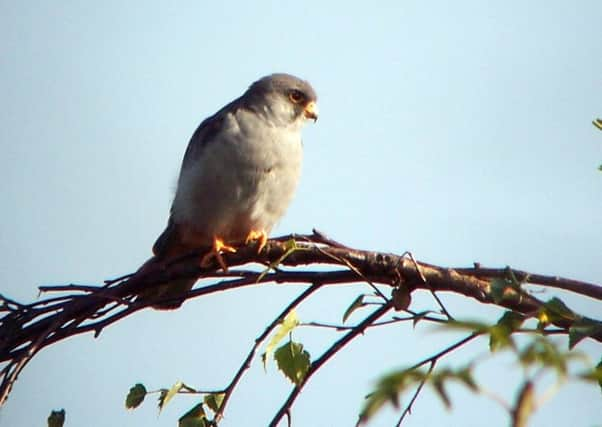Birdwatch: Red feet as the weather warms up


This week two of these, both adult males, have been seen with up to 18 hobbies in the skies above the Thorne Moors reserve near Doncaster.
Red-footed falcons are regularly reported among groups of hobbies as the two species share a liking for large insects and Thorne and Hatfield Moors with their freshwater habitats and open countryside are ideally suited to both.
Advertisement
Hide AdAdvertisement
Hide AdRed footed falcons also winter in southern Africa and return to their breeding sites on the steppes, meadows and riverside trees of Eastern Europe from mid-April onwards where they often breed in colonies in abandoned rooks’ nests.
They have been appearing here regularly in recent summers, so much so that in 2005 it was decided that this species should no longer be regarded as a rarity.
Some years there are large incursions, one of these was in 1992 when at least 40 were present in Norfolk alone and this county still has the highest number of records although Thorne and Hatfield Moors have also had a number of previous records in recent years.
The males have a striking appearance, mostly slate-grey but also with rusty red under the tail and bright red legs while the wings look silvery in flight.
Advertisement
Hide AdAdvertisement
Hide AdIn their shape and behaviour red-footed falcons are rather like a cross between a kestrel and a hobby.
They will join hobbies in their spectacular chases through the sky after insects but also regularly hover like kestrels before dropping down to pick insects up off the ground or to perch on telephone wires or the tops of bushes.
The peak arrival time for them is between mid-May and mid-June and they can turn up almost anywhere, so it is worth also bearing this species in mind when watching for hobbies.
I know of one photographer who thought he had taken a picture of a hobby hunting over a West Yorkshire reserve only to discover later when showing these to a fellow birder that he had in fact seen a red-footed falcon.
Advertisement
Hide AdAdvertisement
Hide AdOspreys have been reported at a number of places across the region, probably non-breeders in no particular hurry to move north, while common cranes have also been seen circling high in the skies, one was reported over Beverley and three over the Fairburn Ings reserve.
A white stork was seen over Elvington near York.
Along the Yorkshire coast a Temminck’s stint was still at the Thornwick Bay pools, Flamborough while a red-breasted flycatcher was caught and ringed at Buckton.
Reminders of winter, a juvenile Iceland gull was at Hornsea Mere and glaucous gull at Ravenscar while there is still a short-eared owl at the Bempton Cliffs reserve and another was seen at Long Nab near Scarborough.